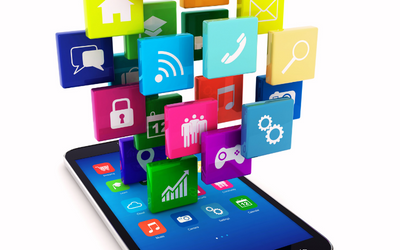Mastering 7 Web Design Trends
In this article, I’ll be showing you the trends you should be looking out to follow to set your website up for success. Whether you’re running a simple e-commerce site, a portfolio website, a services site, or an agency site, these 7 web design trends apply to all kinds of sites and you should optimize yours to follow the standard.
Why?
In the rapidly evolving digital landscape, web design trends play a pivotal role in shaping user experiences and influencing your business’ success. This article will not only uncover the latest trends but also provide actionable insights on how to leverage these trends to enhance user experiences, capture attention, and gain a competitive edge.
Let’s get started.
1. Immersive Storytelling through Video Backgrounds
Imagine visiting a website where the background isn’t just a picture but an actual video playing seamlessly. It’s like watching a short movie that’s part of the website itself! Instead of only having still pictures, businesses are using these moving videos to share their story in an engaging way. This makes the website more exciting and helps you connect with the brand better. Just like how a movie trailer can make you curious about a film, these video backgrounds make you curious about what the website offers.about:blank#blocked
Video backgrounds have emerged as a compelling design trend that instantly captivates visitors. Unlike traditional static images, businesses are now leveraging the dynamic potential of video to narrate their brand’s story in a compelling manner. This entails using captivating video clips as the backdrop for web pages, enveloping users in visually captivating narratives right from the moment they land on the site. This immersive technique leaves a lasting first impression that not only engages but also forges a deeper emotional connection with the audience. It’s crucial to strategically implement video backgrounds that seamlessly align with your brand’s identity and effectively resonate with your target demographic.
An example of where you can see this trend in action is Espacio, a creative digital marketing agency.
2. Dark Mode for Elegance and Visual Comfort
Dark mode, once reserved for niche applications, has transitioned into a mainstream design choice. Now almost all websites, including your devices could switch between light and dark theme modes!
Not only does it enhance visual comfort, especially in low-light conditions, but it also exudes a sense of sophistication. In User interface design and User experience practices, the contrast between dark backgrounds and vibrant content elements draws attention to crucial information, resulting in improved readability and a distinctive aesthetic.
Embrace dark mode to provide users with a visually pleasing experience that stands out.
3. Microinteractions for Delightful Engagement
It’s the little things that often make the most significant impact. Enter microinteractions – those subtle animations and effects that add a touch of magic to user interactions. Imagine buttons that change color when you hover over them or icons that come to life with a playful animation when clicked. These microinteractions are like the sprinkles on a cupcake – they may be small, but they bring immense delight.
These charming details inject personality and life into your website, transforming user experiences from mundane to memorable. As visitors engage with your site, these tiny interactions create a delightful journey, encouraging them to linger longer and explore more of what you have to offer.
In simple terms, microinteractions are like the little surprises that make using a website feel like an enjoyable adventure. It’s those tiny animations and responses that happen when you click, hover, or scroll. These surprises might seem small, but they add up to create a fun and engaging experience that keeps you glued to a site.
To see this in action, explore the website of Mailchimp, an email marketing platform. As you navigate through their pages, notice how buttons, home page logo and other elements react when you hover on them.
4. 3D Visuals for Depth and Realism

In the dynamic landscape of web design, the future is three-dimensional. Advancements in technology have propelled 3D visuals to the forefront, revolutionizing the way users interact with digital content. These three-dimensional elements go beyond the constraints of flat images, breathing life into websites with depth, realism, and interactivity. The result is an immersive digital environment that captivates and engages users like never before.
Think of it as exploring a virtual gallery where you can walk around and interact with the art. This trend takes the concept of user engagement to a whole new level, as visitors become active participants in their digital journey.
The allure of 3D visuals lies in their ability to mimic reality. They add depth to the canvas, making elements appear as if they’re jumping off the screen. This realism isn’t just visually appealing; it also enhances user comprehension. Imagine showcasing a product in 3D – users can rotate it, zoom in, and truly understand its features, much like holding it in their hands.
With 3D, the journey isn’t just about visuals, it is more about interactiveness.
5. Minimalistic Design for Clarity
Simplicity is a timeless principle in design, and it continues to thrive in 2023. Minimalistic design, with its clean lines, generous white spaces, and precise typography, remains a cornerstone of effective web experiences. This approach isn’t just about aesthetics; it’s about guiding users’ attention, amplifying content impact, and fostering seamless interactions. As brands embrace minimalism, they unlock a world of benefits that enhance user engagement and elevate their online presence.
Although I’m not a minimalist, I’ve been impressed and genuinely fascinated with minimalistic designs since my discovery of the concept. Picture a beautifully laid-out room with ample space to breathe and move. Minimalistic web design mirrors this concept, utilizing ample white space to provide users with visual relief but this whitespace isn’t just emptiness; it’s a powerful tool that directs attention to what truly matters.
Typography, another key player in this symphony of simplicity, takes center stage. Precise and thoughtful typography doesn’t just communicate content; it becomes part of the visual experience. Every font choice, size, and spacing is meticulously crafted to align with the brand’s identity and amplify the content’s significance.
All this isn’t just about visual; it’s experiential. And I’m not trying to make this sound extremely OP for you. What it simply means is that you endeavor to adopt simplicity in your design. A vibrant example of a design like this is the Apple’s webpage.
6. Voice User Interface (VUI) for Intuitive Interactions
With the rise of virtual assistants and smart devices, Voice User Interfaces (VUIs) are gaining prominence. Integrating VUI into web design enables users to interact with your website using voice commands. You can see this in messaging apps like WhatsApp Messenger or Facebook Messenger. Although this may seem much like it isn’t for every site, it’s for everyone. All users, including you and me, want an easy seamless experience while interacting with a product or device. And if that means less typing and more relaxed speaking with my device…well sign me up!
That’s exactly what this trend does. It enhances accessibility and streamlines user interactions, making navigation and search effortless. Incorporate VUI elements to create a user-centric experience that accommodates diverse preferences.
ALSO READ: Timeless Elegance: The Power of Minimalistic Web Design
7. Personalized User Experiences with AI
Atificial Intelligence (AI) is revolutionizing web design by enabling personalized experiences tailored to each user’s preferences and behaviors. AI-powered algorithms analyze user data to deliver customized content, product recommendations, and even design variations. This trend not only enhances engagement but also drives conversions by presenting users with content that resonates. You can integrate an AI chat assistant that serves as a customer service touchpoint to your website, where all simple customer enquiries can be answered through a tailored and automated response and complex ones will be directed into your business inbox!
What Can You Take Away From This?
In the ever-evolving digital ecosystem, staying abreast of web design trends is essential for crafting exceptional user experiences that set you apart. By seamlessly integrating immersive storytelling, dark mode aesthetics, microinteractions, 3D visuals, minimalistic layouts, VUI, AI-driven personalization, and sustainable practices, you can craft a website that not only engages users but also forges a lasting connection.
You too can harness the power of web design to create a competitive edge, elevate user experiences, and propel your brand into the forefront of innovation. However, it is understandable that it can be overwhelming, that is why we’re here to do it for you. Check out our services section or contact us directly to kickstart the designing of your own website for a minimal fee!
Web design trends are not just about aesthetics; they’re about orchestrating meaningful interactions that leave a lasting impact. By merging innovation with user-centricity, you can craft a digital presence that resonates with today’s discerning audiences and leads the way in tomorrow’s digital landscape.





